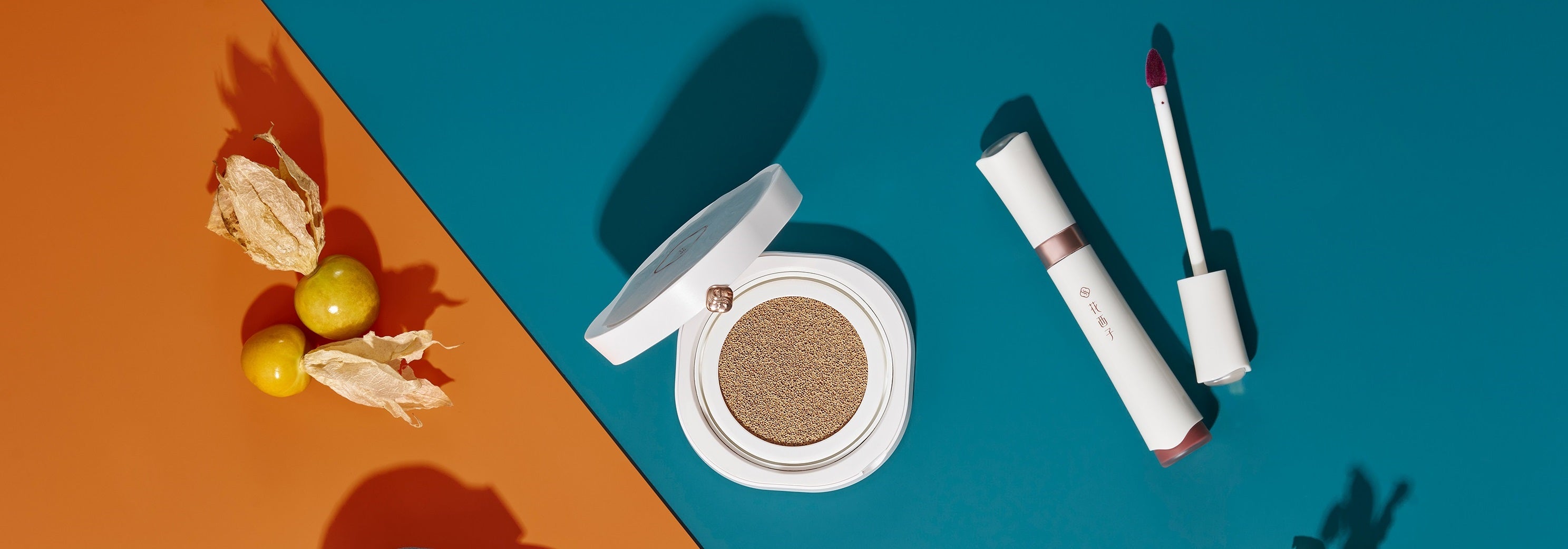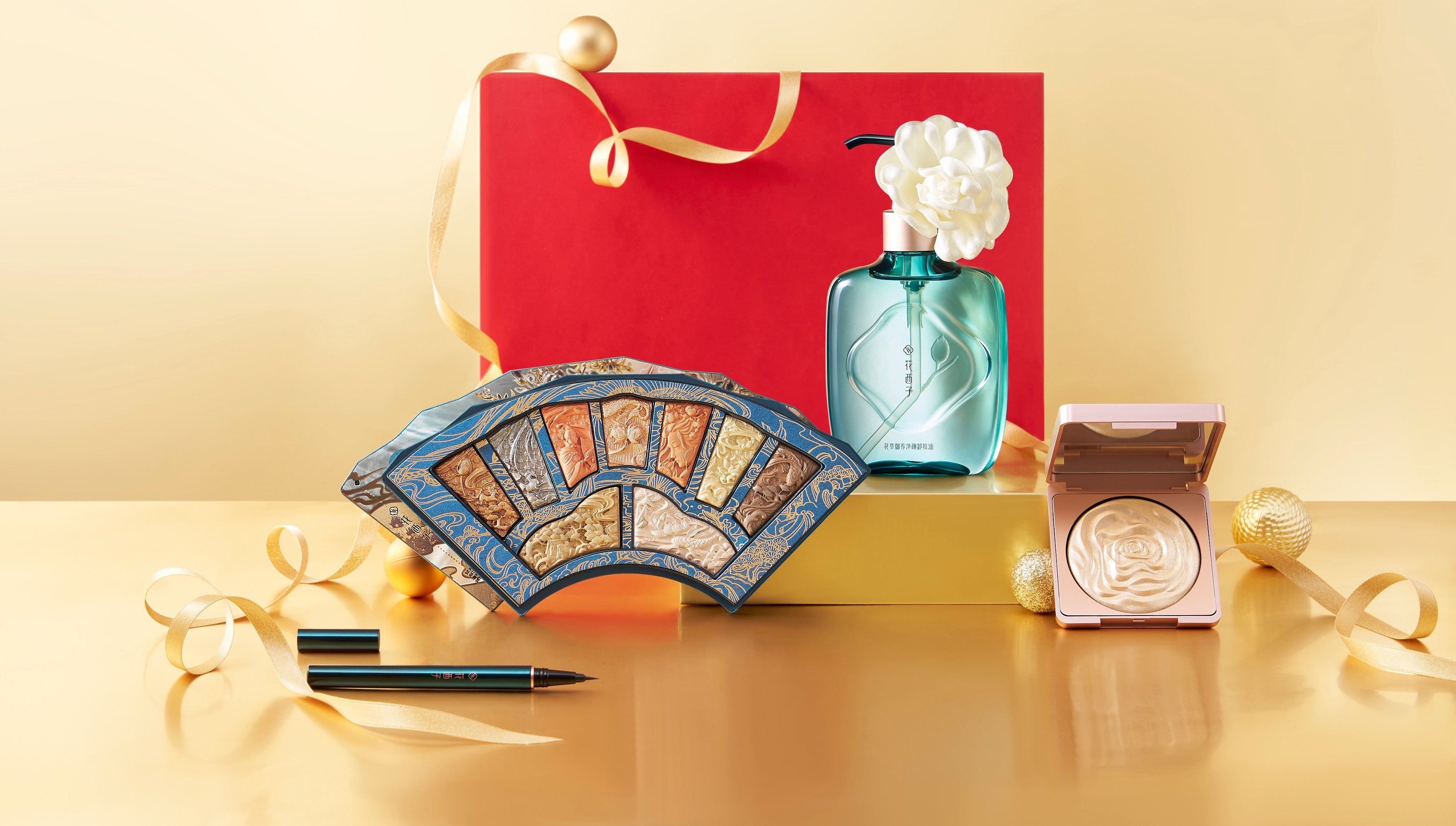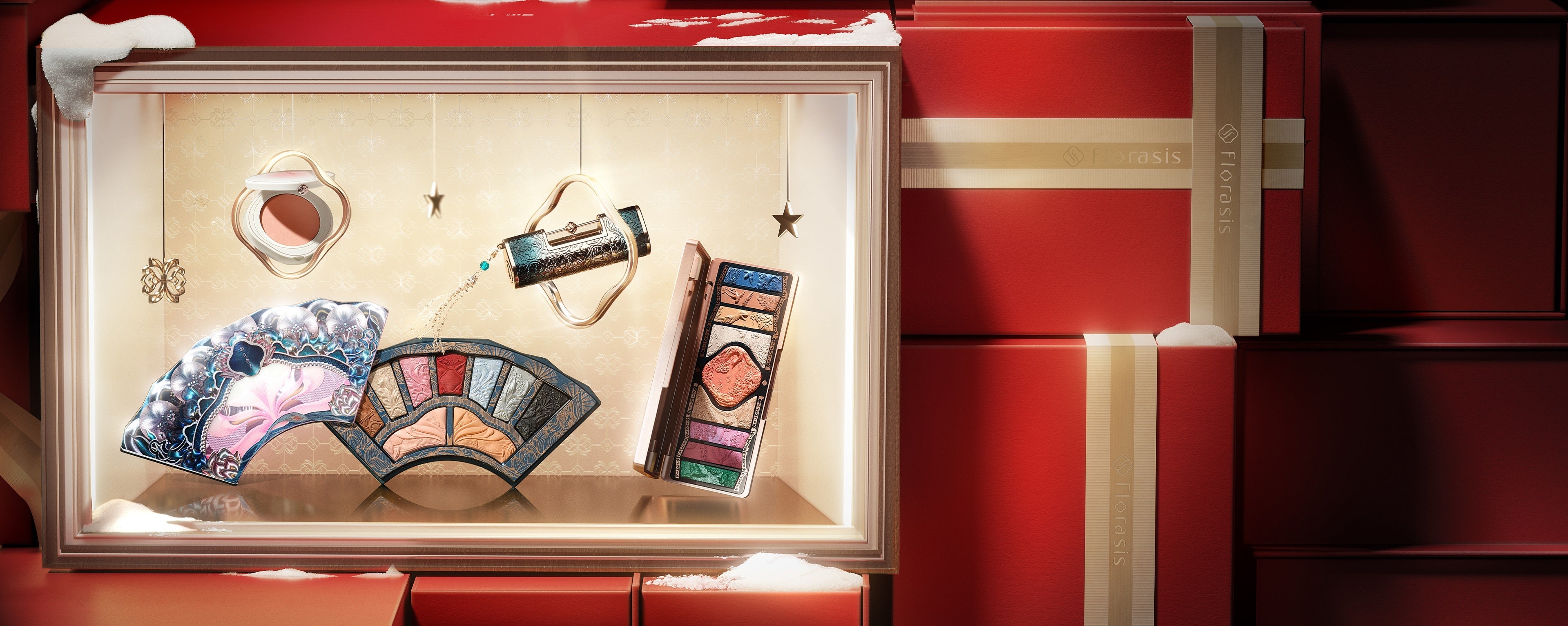
AUTUMN GREETINGS: 6 SOLAR TERMS LOOKS
As the cool season hits its stride, we revel in flushes of rosy cheek color and wrap up in anticipation of winter's chill. Fruitful, rich, and filled with comforting food, autumn's charms flourish in these six Solar Term-inspired looks.
Start of Autumn
立秋 (lì qiū) is our first Solar Term and the signal of the fruitful season. Farmers harvest their crops, and in Hangzhou, people eat peaches and keep the pit until New Year's Eve before throwing it into the stove and burning it to ash. This custom was once believed to prevent plagues.
This Liqiu look was inspired by the hibiscus flower or the Rose of Sharon. Its Chinese name is 木槿 (mù jǐn).

End of Heat
As 处暑 (chǔ shǔ) brings the cool weather and the end of summer, many people feel tired and languid. This autumn weariness encourages us to slow down and rest from the busy summer. During this period of warm days and cold nights, it's the ideal season to eat duck, which is known in Chinese medicine as a "cool" food.
This Chushu look was inspired by the August lily. Its Chinese name is 玉簪花 (yù zān huā).

White Dew
As temperatures sink lower and white dew settles on the grass at night, 白露 (bái lù) welcomes the real beginning of cool autumn. A time to drink White Dew Wine (made from glutinous rice and gaoliang, a type of sorghum) and White Dew Tea to stay warm while indulging in the season of grapes, longan, and sweet potatoes.
This Bailu look was inspired by the osmanthus flower. Its Chinese name is 桂花 (guì huā).

Autumn Equinox
When 秋分 (qiū fēn) arrives, it's time to feast on roasted chestnuts, crabs, Qiucai (wild amaranth), pears, papayas, and beans. While we satisfy our appetites with hearty food, we admire chrysanthemums and inhale the sweet fragrant smell of osmanthus in the air.
This Qiufen look was inspired by the Chinese trumpet vine. It's Chinese name is 凌霄花 (líng xiāo huā).

Cold Dew
寒露 (hán lù) is the most delicious time for crab, hawthorns, and pomegranates. This season's iconic flower is the chrysanthemum, and chrysanthemum wine is believed to prevent autumn dryness. The Double Ninth Festival (the ninth day of the ninth month of the Chinese lunar calendar) often falls around Cold Dew, and celebrating with wine is an ancient tradition believed to grant long-lasting youth.
This Hanlu look is inspired by the chrysanthemum flower. The Chinese name for chrysanthemum is 菊花 (jú huā).

Frost Descends
霜降 (shuāng jiàng) is the time for ripe, juicy persimmons, apples, pears, and dates. As white ice crystals form and the start of winter slowly creeps in, there's still time to enjoy the spoils of autumn and protect one's health with rich, satisfying food.
This Shuang jiang look was inspired by the Chinese hibiscus flower, known as the 朱槿 (zhū jǐn) in Chinese.






Laisser un commentaire
Ce site est protégé par hCaptcha, et la Politique de confidentialité et les Conditions de service de hCaptcha s’appliquent.